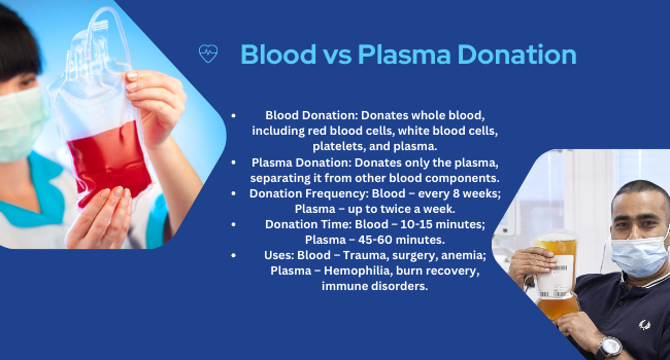Leadgrowdevelop
1M
49

Image Credit: Leadgrowdevelop
Plasma versus Blood Donation: What’s the Distinction and Why It Makes a Difference
- Plasma and blood donation have key differences in components and donation processes, with plasma donation being equally important for saving lives as whole blood donation.
- Plasma, comprising around 55% of blood, plays crucial roles like transporting nutrients, supporting blood clotting, and regulating immune function.
- Regular plasma donation is incentivized with rewards like Biolife Coupon for Returning Donors, helping maintain the crucial supply for medical treatments.
- While whole blood donations are utilized for various medical scenarios, plasma donations are specifically used to treat conditions like hemophilia and immune deficiencies.
- Plasma donation processes involve apheresis, allowing for more frequent donations compared to whole blood donations.
- Plasma donation centers offer compensation to donors, with incentives like gift cards, to encourage regular plasma donations.
- Blood donation is typically voluntary and uncompensated, with donors sometimes receiving thank-you gifts or rewards.
- Plasma donation takes longer due to the apheresis process, lasting around 45 minutes to an hour, whereas blood donation process is quicker.
- Both plasma and blood donation are crucial for medical treatments, with plasma playing a significant role in therapies for chronic diseases.
- Understanding the importance and distinctions between plasma and blood donation is essential for individuals looking to contribute to saving lives.
Read Full Article
2 Likes
For uninterrupted reading, download the app